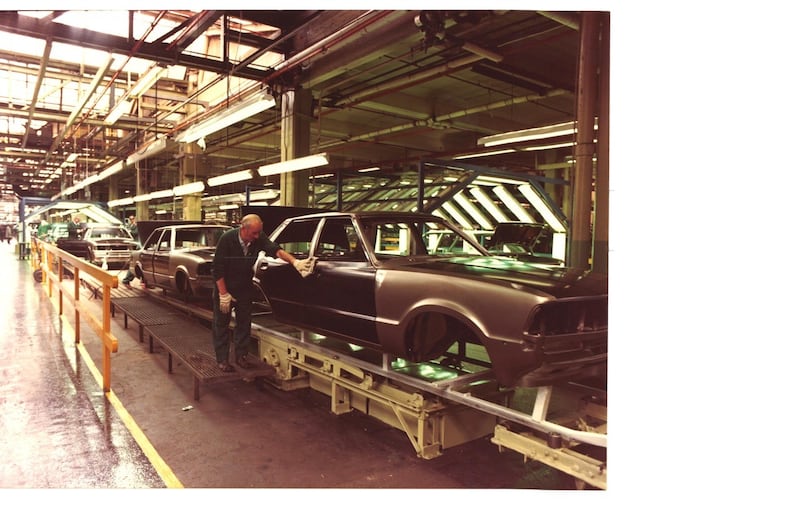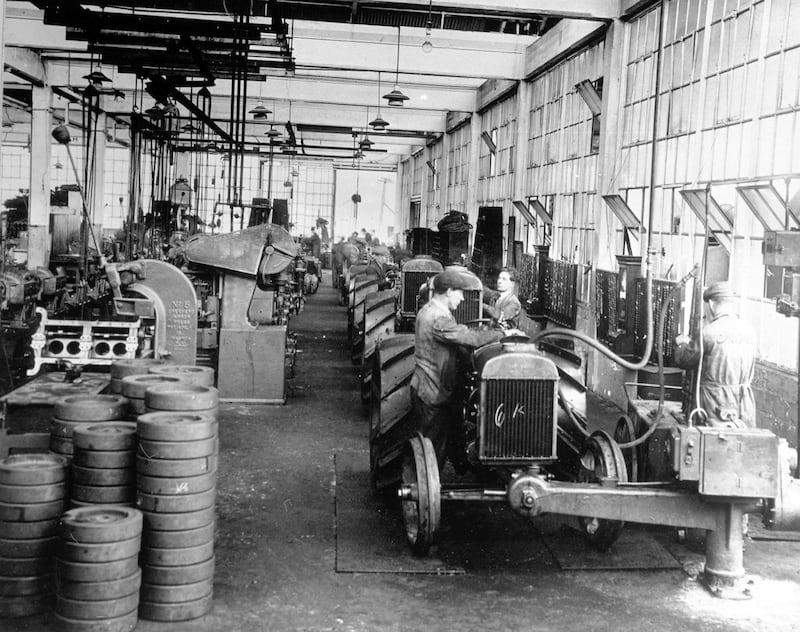Forty years ago this year – and 90 years after it began, thanks to a new set of laws on the imports of cars put together by Seán Lemass, then minister for industry and commerce – the manufacturing of cars in Ireland came to an end. In some ways, using the word “manufacturing” gives the industry a bit of a glow-up, as really it was more assembly than manufacture. Cars were shipped here in kit form, and put together with local labour and enough local parts content – windscreens, tyres, filters, springs, electrical bits and pieces, etc – that they could avoid the swingeing taxes which the various Irish governments imposed on imported cars (sound familiar?).
Motor Assembly In Ireland, by noted motoring historian Bob Montgomery, is now in its second edition and frankly shouldn’t be absent from the desk or bookcase of any Irish car enthusiast. What could have been a dry series of numbers and statistics has instead become a sweeping, sometimes rollicking, tale of industry, commerce and keeping one step ahead of the taxman.
The most famous car factory in Ireland was probably the Ford plant, on the quayside in Cork. Originally opened in 1919 to make tractors, the Cork plant first started making cars in 1934, and would continue to do so right up to 1984. Indeed, it may surprise some to know that a handful of the original “jellymould” Ford Sierras were made in Cork, which was perhaps better known for its production of Cortinas and Escorts. The factory was criticised by some industry experts in the 1970s for building (all right, assembling) a multiplicity of models under one roof – something which has since gone on to be standard practice across the car-making world.

A Ford was not, most likely, the last car to be made in Ireland however. Records and recollections differ, of course, but Montgomery reckons that the very last car to be put together in an Irish factory and shipped out to a dealer was a Mazda 323. Mazda was then part of the vast Motor Distributors Group, and the 323 was built in the same massive building – still there and still the home of the company – just off the Naas Road in Dublin, where they were built alongside the VW Beetle and various Mercedes models.
READ MORE
Yes, Mercs were built in Dublin. A fact that – Michael Caine style – not a lot of people know. Montgomery’s book delves deeper into fact land than that, though. Everyone knows that the first VW Beetle not built in Germany was assembled from a kit delivered to Motor Distributors’ then headquarters on Dublin’s Shelbourne Road in 1950, but the assembly of Irish cars covers a much broader spectrum than that.
Toyota, Nissan (then still badged as Datsun), Fiat and Renault all assembled cars in Ireland, in factories dotted around Dublin and, in Renault’s case, Wexford. Peugeot made cars here too, as did Opel and the now-defunct brands of Austin and Morris. Even a handful of Jaguars were built in Ireland, while Hillman – now long gone – once built the Hunter saloon (a rival to the likes of the Ford Cortina) in a factory in Santry, exporting them to the UK market in a slightly bizarre twist.
Those marques you might have expected to build cars here, but what about Studebaker? Yup, the obscure American brand built a handful of cars in Ireland between 1936 and 1953, including the somewhat unfortunately titled Dictator model (its sister model was the more pleasingly named President) in 1937.
Skoda too built cars in Ireland, including the original Octavia, which cost just £499 at the time, shipping kits across the Iron Curtain in the 1950s and 1960s, although construction was a bit fitful, with entire years missing from the assembly records.
Fancy something more obscure? French brand Simca built cars in Ireland, as did the truly obscure Panhard, a brand which had been an early pioneer of cars in Edwardian times, but which built the small but sleek PL17 model here in the early 1960s. Also made In Ireland were German marques which would be eventually subsumed into Audi, such as DKW (with its neat little two-stroke engines) and NSU which made the little rear-engined Prinz saloon that saw success on the Circuit of Ireland Rally.
Needless to say, there were some characters involved in all of this. Stephen O’Flaherty started off as an accountant in Ford’s Irish operations, before eventually building his own empire, assembling that first non-German Beetle, and eventually creating the behemoth that is Motor Distributors, which is still the Irish importer for Mercedes-Benz (along with other brands such as BYD and Smart). A tale is told of O’Flaherty, indulging in his passion for racing horses, giving a jockey a lift to the racecourse at Down Royal, but abandoning him there with the words: “He f**king lost, leave him here.”

Better still is the unnamed person from the O’Shea company which built Opels in Cork in the 1960s who, when responding to customer complaints of water leaks in their cars, suggested that they invest in some Wellington boots. Or perhaps the tale of the Ford Anglia which had been built with one door on one side, and two doors on the other, technically making it half-Anglia, half-Prefect. Indeed, quality control was always an issue in the Irish assembly business. One former industry luminary once suggested to this writer that the quality of Fiat cars assembled in the Kylemore Road factory in Dublin made the cars coming out of Turin look like Rolls-Royces.
Rolls-Royce is one of the few famous motoring brands not to get a mention in an annals of Irish assembly, but Chevrolet does, as does Chrysler, Borgward, Huppmobile, Hudson, MG, Morgan, and even Messerschmitt.
One page especially stood out, in a personal sense. German marque Adler assembled some cars in Ireland in the 1930s, and the company which carried out the assembly was one Robert Briscoe, then a serving TD. Robert is from that arm of the Briscoe family which left for England in the 1600s, and renounced their Jewish faith to become Anglican. It’s those Anglican ancestors which distantly link Robert and me. While it’s pleasing to note that a distant relative was once a small cog in Ireland’s car-making machine, there’s a darker note involved in the story. As Montgomery writes: “In 1937, no doubt alarmed by the rise of anti-Semitism in Europe, Briscoe decided to reduce his involvement…” The tides of history flow deep.
“The crucial value of an Irish assembly industry was in creating for the first time an industrial infrastructure where none had existed before,” said Montgomery. “Almost entirely bypassed by the industrial revolution, for the first time significant industrial and light engineering were established to supply the assembly industry with the many components it required. It played a vital role in the transition of the young Irish State to a more diversified economy with a stronger industrial base.”
Motor Assembly In Ireland, by Bob Montgomery, from Dreoilin Books. Priced €25.
- Sign up for push alerts and have the best news, analysis and comment delivered directly to your phone
- Join The Irish Times on WhatsApp and stay up to date
- Listen to our Inside Politics podcast for the best political chat and analysis













